Abstract
The PhenePlate (PhP) biochemical fingerprinting system is an automated method for typing of bacteria, based on the evaluation of the kinetics of biochemical reactions, performed in microtitre plates. In the present study the PhP-Klebsiella/Enterobacter (KE) system was evaluated for typing of Enterobacter cloacae and employed to study the epidemiology of faecal E. cloacae strains isolated from infants in 22 Swedish neonatal wards. The PhP-KE system showed a high reproducibility and discrimination for E. cloacae isolates. Among 64 epidemiologically unrelated E. cloacae strains, 49 distinct phenotypes were found, and the diversity index was 0.985. E. cloacae was found as a part of the dominating Gram-negative aerobic bacterial flora in 83 out of 953 infants studied. The incidences of E. cloacae colonization varied between 0 and 35% in different wards, but in contrast to previous data for Klebsiella spp. and Escherichia coli, there was little evidence of spread of particular strains in the wards. We also discuss two different measures of nosocomial transmission of bacterial strains: transmissible strains and epidemic index.
Full text
PDF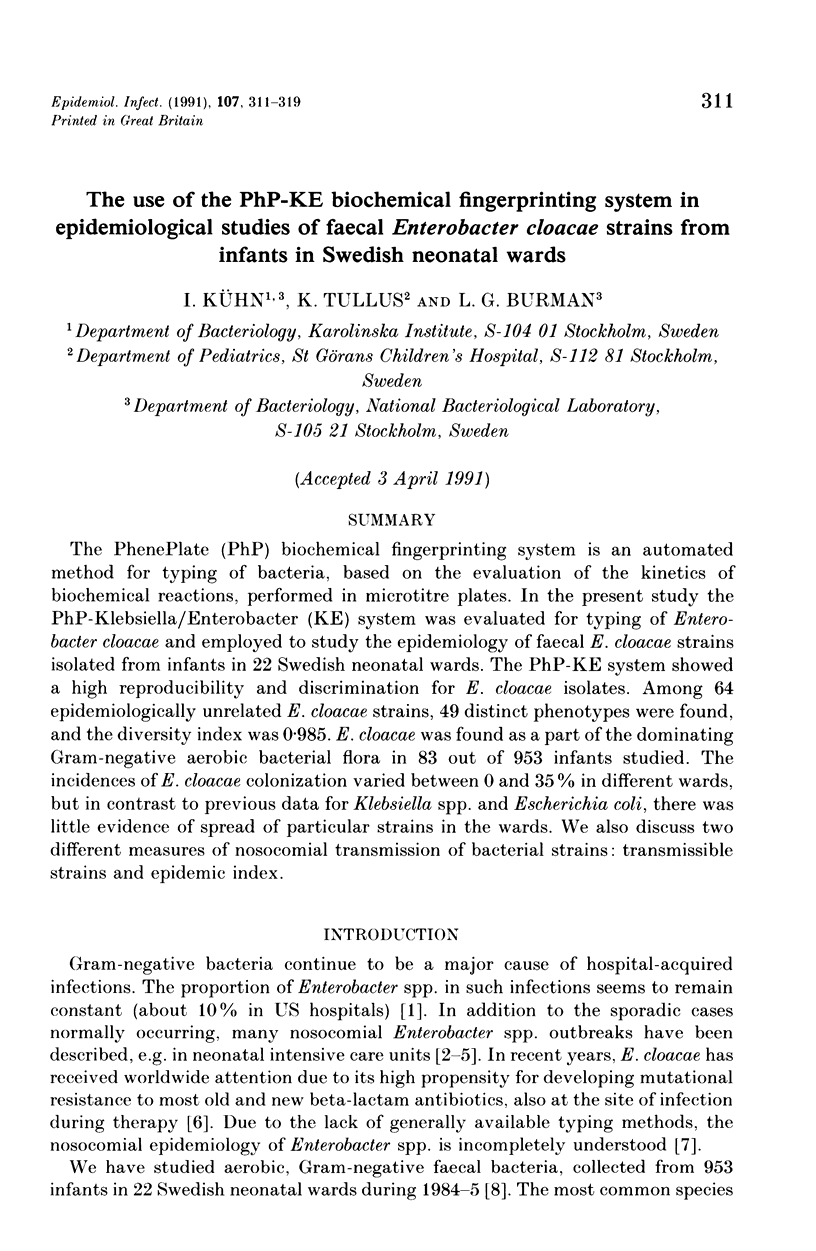
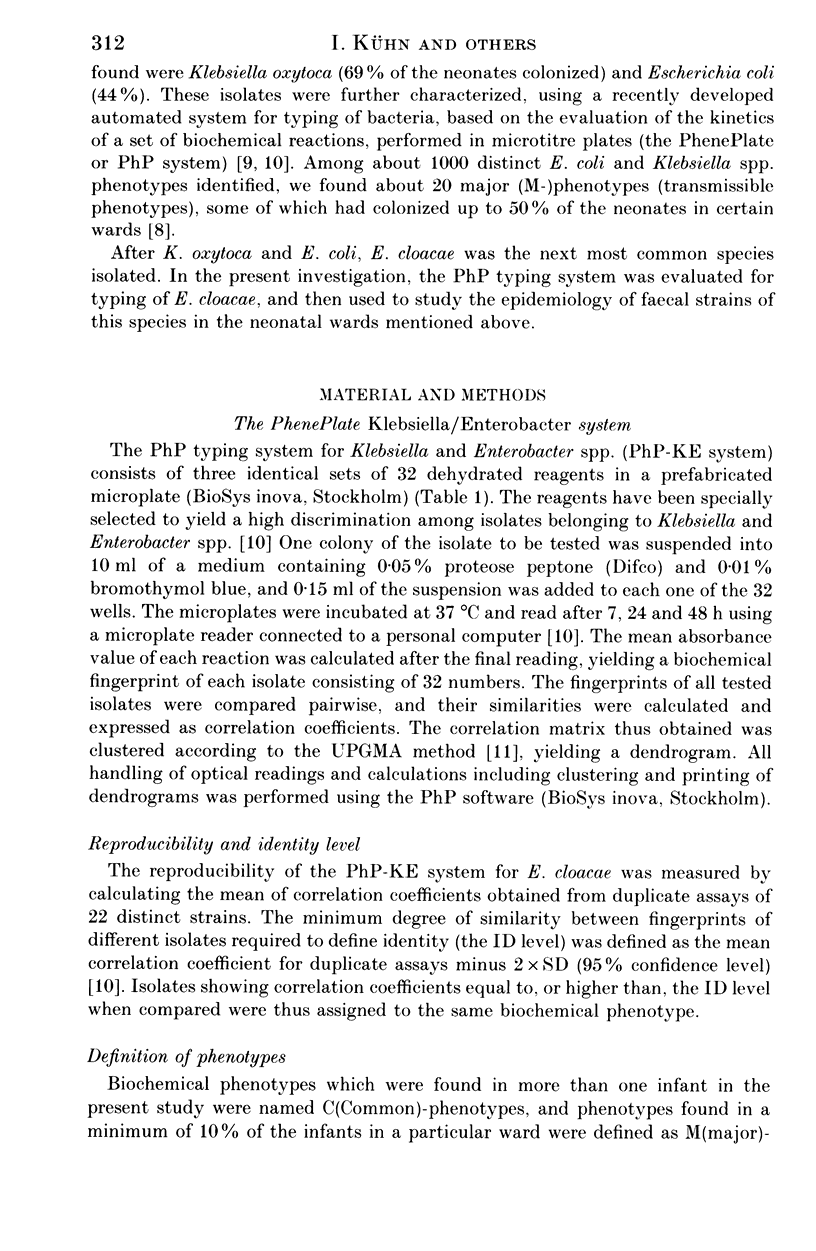
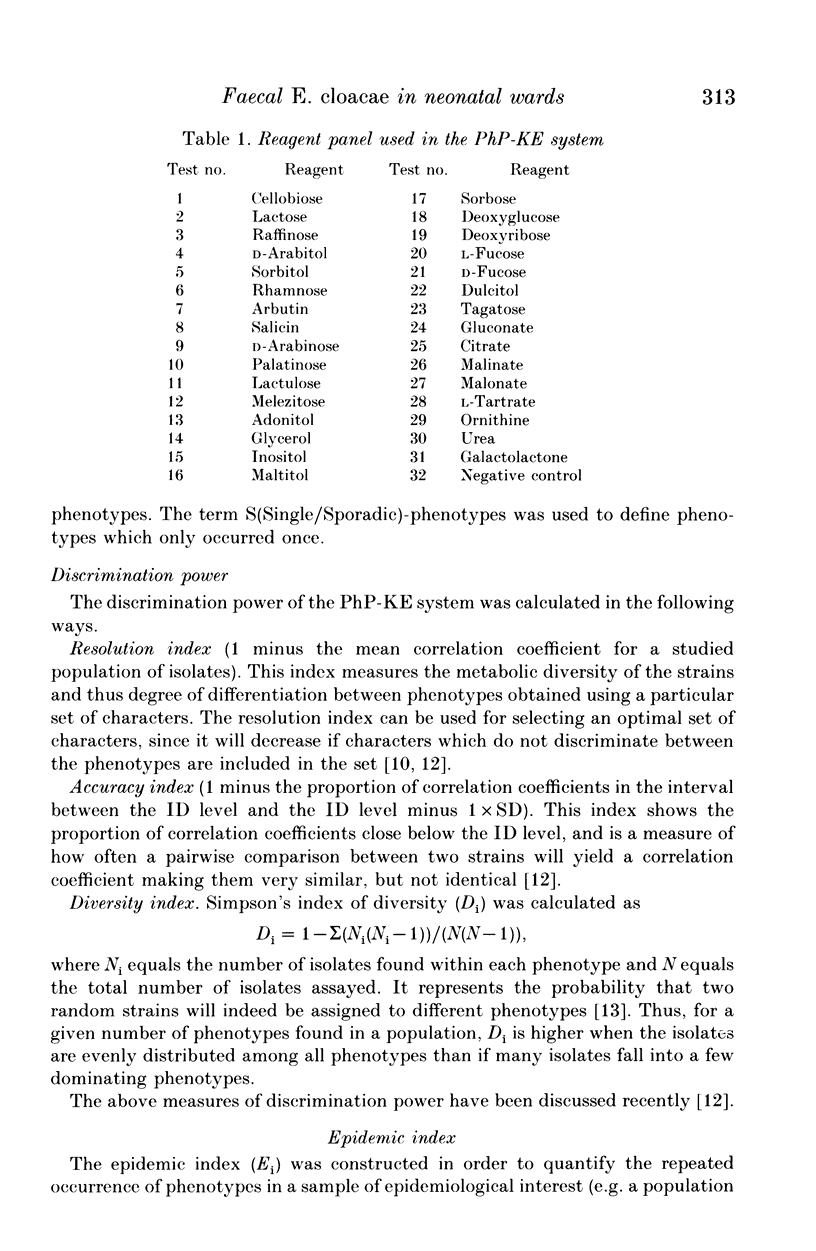
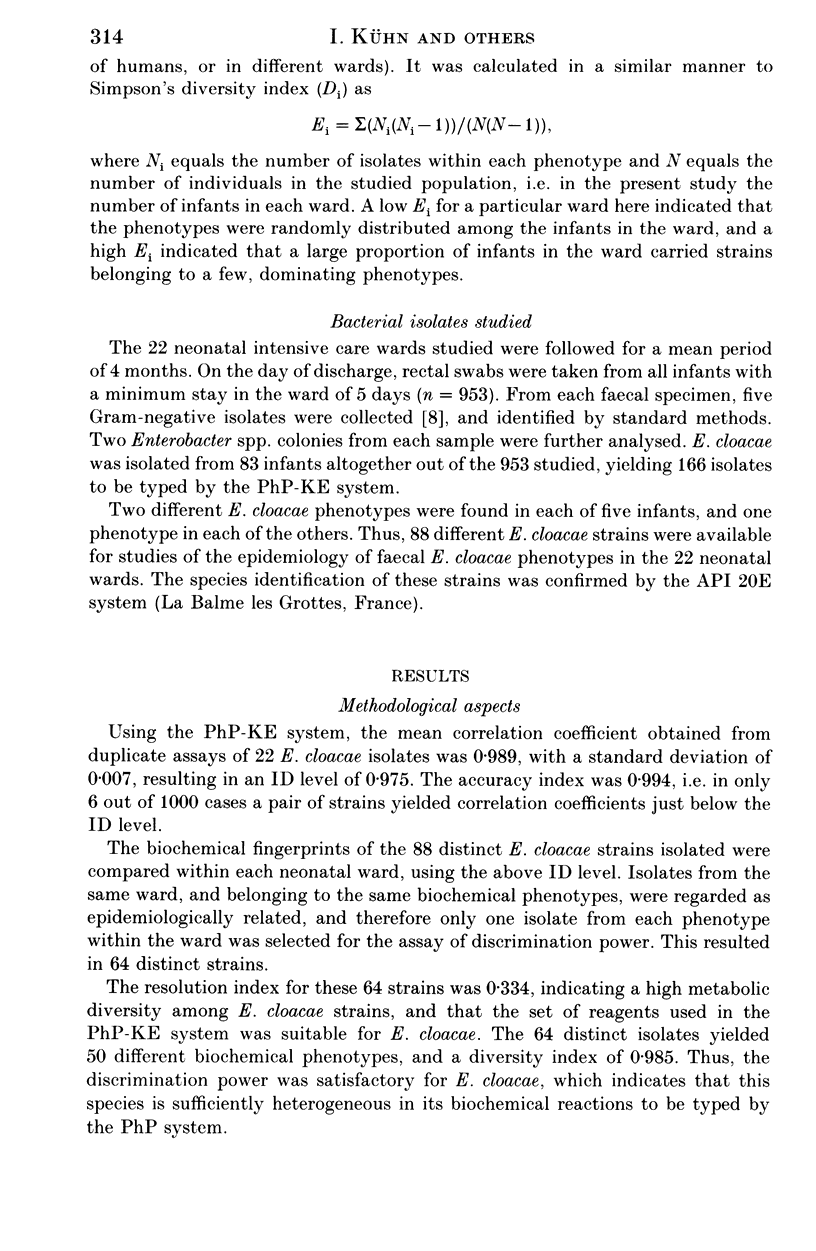
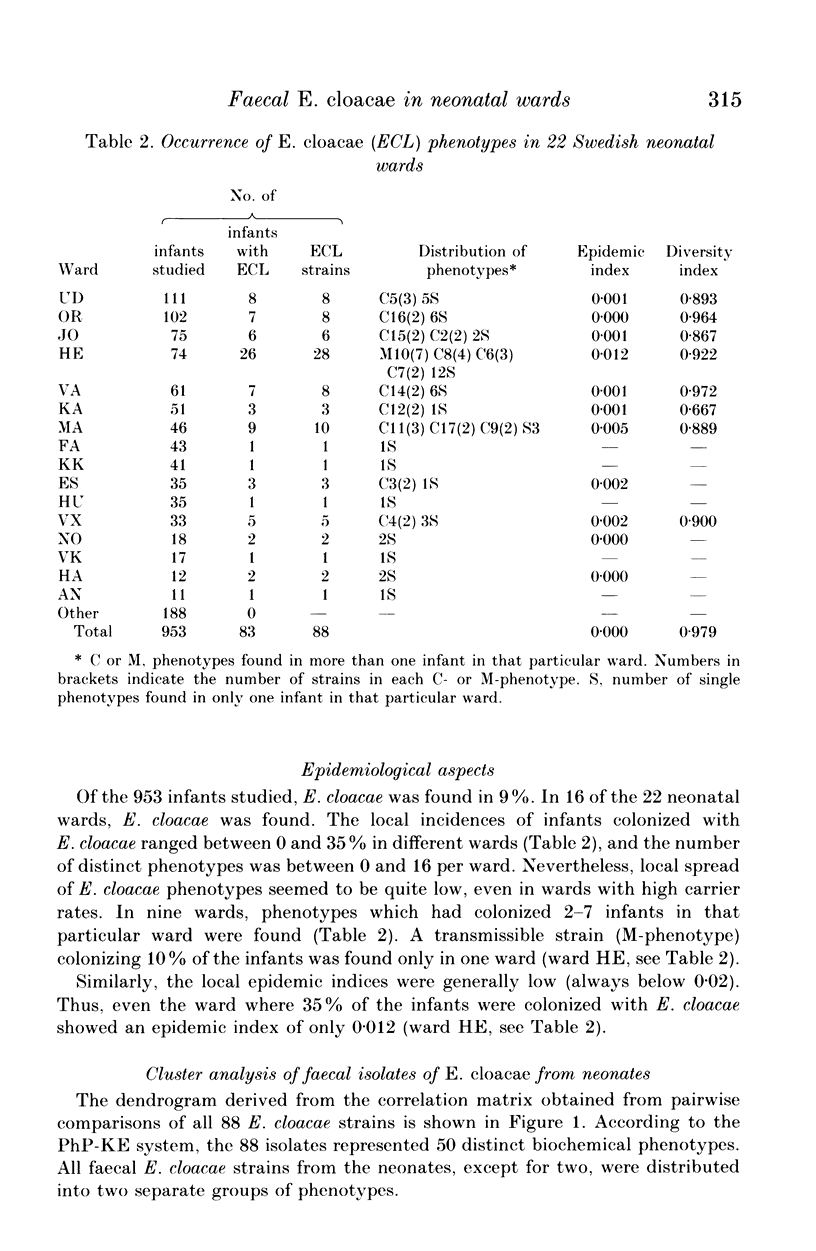
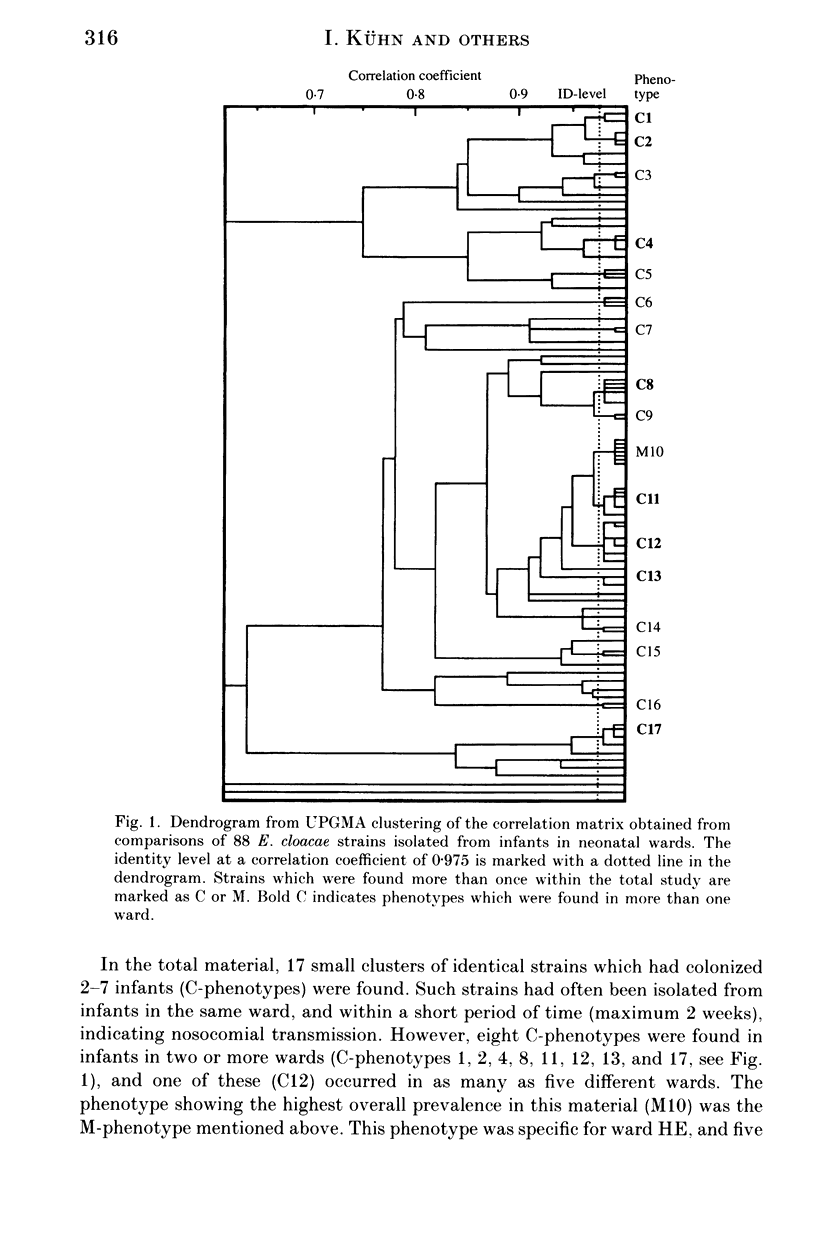
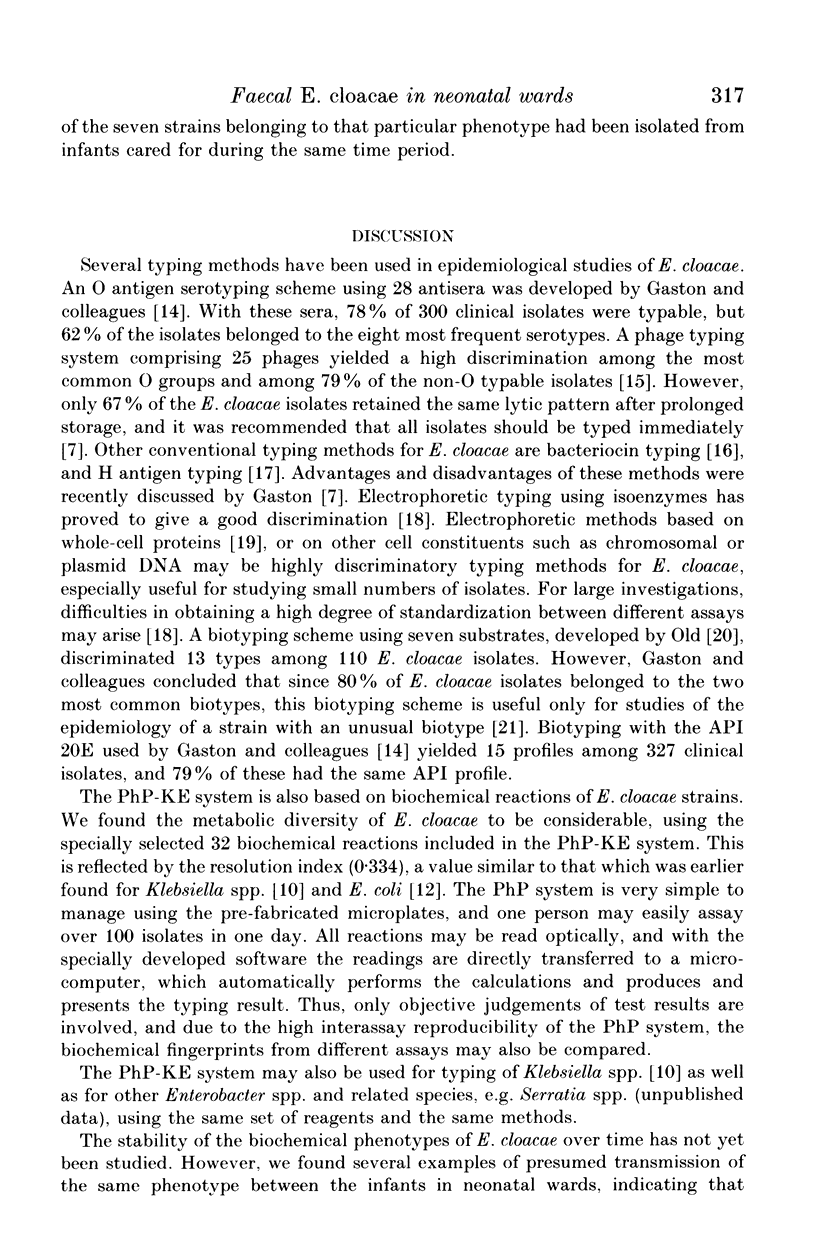
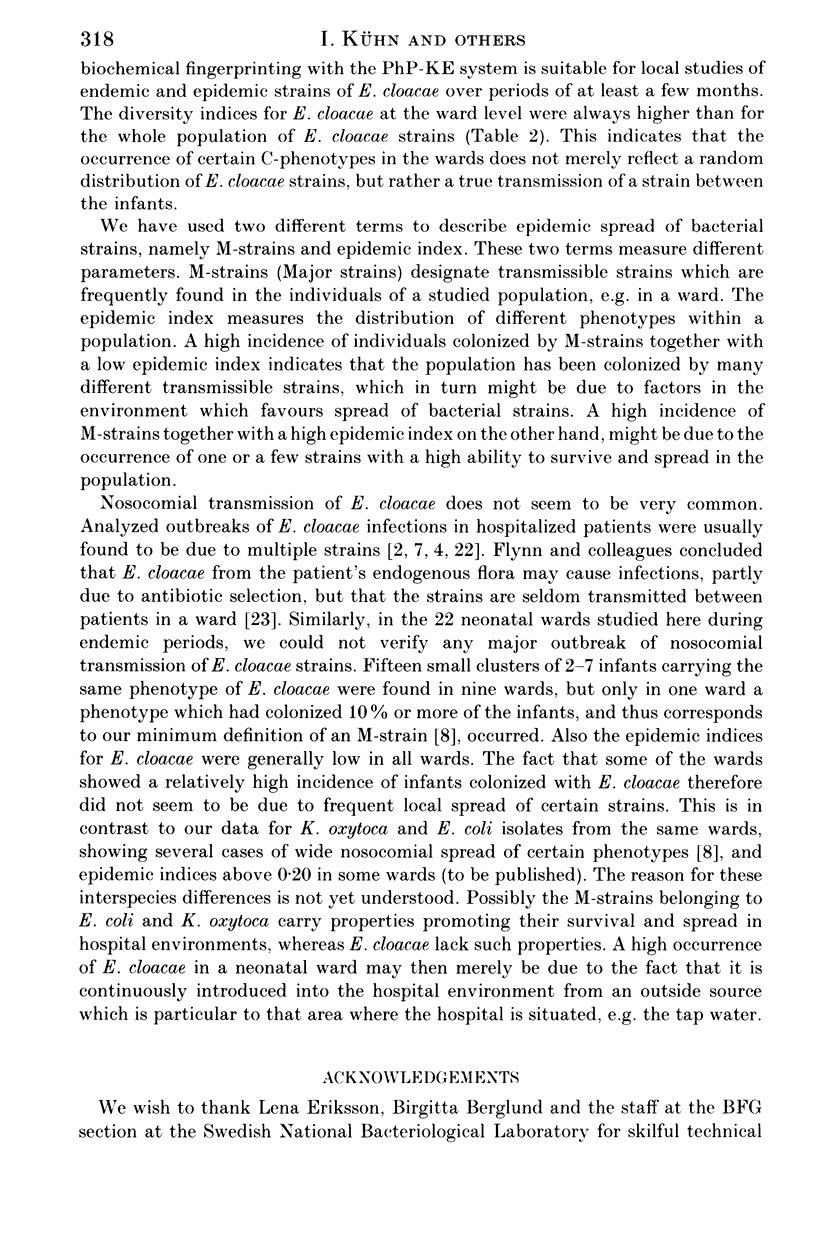
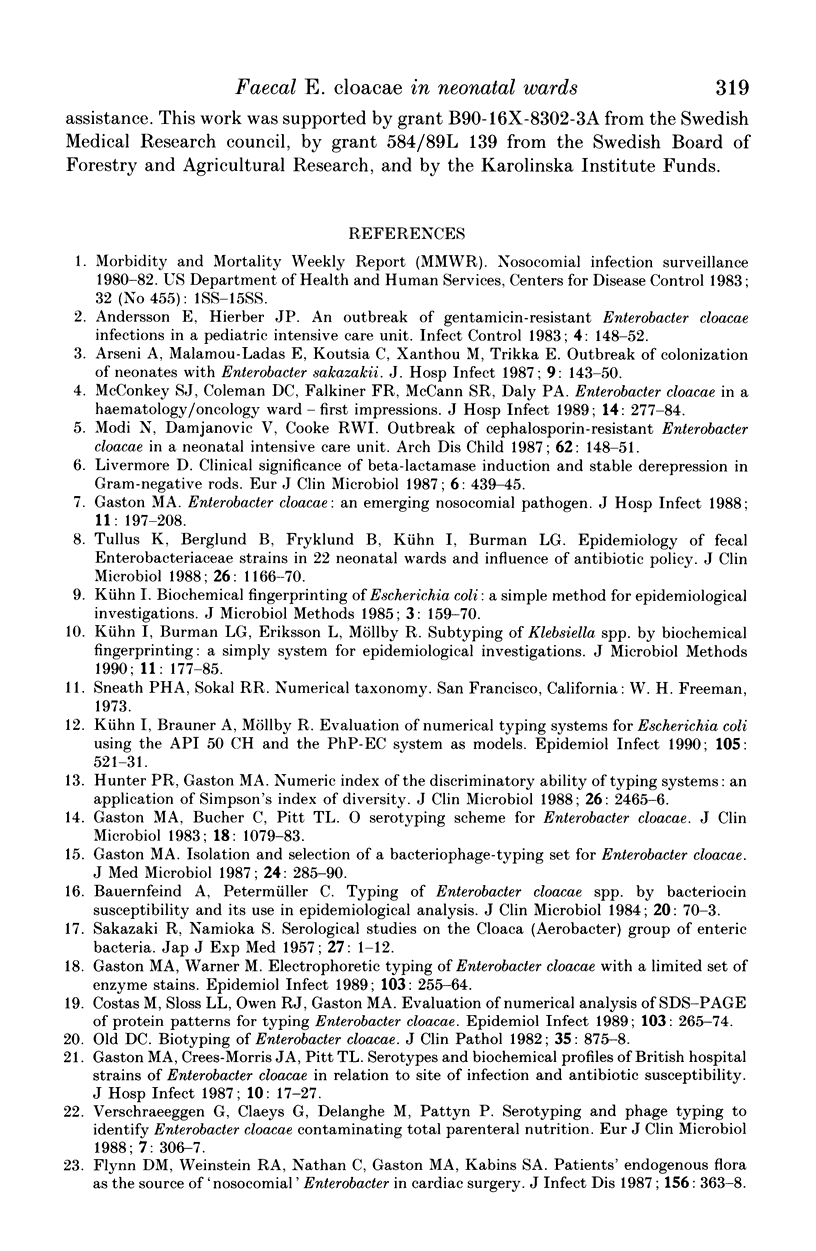
Selected References
These references are in PubMed. This may not be the complete list of references from this article.
- Anderson E. L., Hieber J. P. An outbreak of gentamicin-resistant Enterobacter cloacae infections in a pediatric intensive care unit. Infect Control. 1983 May-Jun;4(3):148–152. doi: 10.1017/s0195941700058069. [DOI] [PubMed] [Google Scholar]
- Arseni A., Malamou-Ladas E., Koutsia C., Xanthou M., Trikka E. Outbreak of colonization of neonates with Enterobacter sakazakii. J Hosp Infect. 1987 Mar;9(2):143–150. doi: 10.1016/0195-6701(87)90052-1. [DOI] [PubMed] [Google Scholar]
- Bauernfeind A., Petermüller C. Typing of Enterobacter spp. by bacteriocin susceptibility and its use in epidemiological analysis. J Clin Microbiol. 1984 Jul;20(1):70–73. doi: 10.1128/jcm.20.1.70-73.1984. [DOI] [PMC free article] [PubMed] [Google Scholar]
- Costas M., Sloss L. L., Owen R. J., Gaston M. A. Evaluation of numerical analysis of SDS-PAGE of protein patterns for typing Enterobacter cloacae. Epidemiol Infect. 1989 Oct;103(2):265–274. doi: 10.1017/s0950268800030624. [DOI] [PMC free article] [PubMed] [Google Scholar]
- Flynn D. M., Weinstein R. A., Nathan C., Gaston M. A., Kabins S. A. Patients' endogenous flora as the source of "nosocomial" Enterobacter in cardiac surgery. J Infect Dis. 1987 Aug;156(2):363–368. doi: 10.1093/infdis/156.2.363. [DOI] [PubMed] [Google Scholar]
- Gaston M. A., Bucher C., Pitt T. L. O serotyping scheme for Enterobacter cloacae. J Clin Microbiol. 1983 Nov;18(5):1079–1083. doi: 10.1128/jcm.18.5.1079-1083.1983. [DOI] [PMC free article] [PubMed] [Google Scholar]
- Gaston M. A., Crees-Morris J. A., Pitt T. L. Serotypes and biochemical profiles of British hospital strains of Enterobacter cloacae in relation to site of infection and antibiotic susceptibility. J Hosp Infect. 1987 Jul;10(1):17–27. doi: 10.1016/0195-6701(87)90028-4. [DOI] [PubMed] [Google Scholar]
- Gaston M. A. Enterobacter: an emerging nosocomial pathogen. J Hosp Infect. 1988 Apr;11(3):197–208. doi: 10.1016/0195-6701(88)90098-9. [DOI] [PubMed] [Google Scholar]
- Gaston M. A. Isolation and selection of a bacteriophage-typing set for Enterobacter cloacae. J Med Microbiol. 1987 Dec;24(4):285–290. doi: 10.1099/00222615-24-4-285. [DOI] [PubMed] [Google Scholar]
- Gaston M. A., Warner M. Electrophoretic typing of Enterobacter cloacae with a limited set of enzyme stains. Epidemiol Infect. 1989 Oct;103(2):255–264. doi: 10.1017/s0950268800030612. [DOI] [PMC free article] [PubMed] [Google Scholar]
- Hunter P. R., Gaston M. A. Numerical index of the discriminatory ability of typing systems: an application of Simpson's index of diversity. J Clin Microbiol. 1988 Nov;26(11):2465–2466. doi: 10.1128/jcm.26.11.2465-2466.1988. [DOI] [PMC free article] [PubMed] [Google Scholar]
- Kühn I., Brauner A., Möllby R. Evaluation of numerical typing systems for Escherichia coli using the API 50 CH and the PhP-EC systems as models. Epidemiol Infect. 1990 Dec;105(3):521–531. doi: 10.1017/s0950268800048147. [DOI] [PMC free article] [PubMed] [Google Scholar]
- Livermore D. M. Clinical significance of beta-lactamase induction and stable derepression in gram-negative rods. Eur J Clin Microbiol. 1987 Aug;6(4):439–445. doi: 10.1007/BF02013107. [DOI] [PubMed] [Google Scholar]
- MORISITA T., MABUCHI M. On T.M reaction, a new diagnostic method for ascariasis by the precipitation test. Jpn J Exp Med. 1957 Apr;27(1-2):1–4. [PubMed] [Google Scholar]
- McConkey S. J., Coleman D. C., Falkiner F. R., McCann S. R., Daly P. A. Enterobacter cloacae in a haematology/oncology ward--first impressions. J Hosp Infect. 1989 Nov;14(4):277–284. doi: 10.1016/0195-6701(89)90067-4. [DOI] [PubMed] [Google Scholar]
- Modi N., Damjanovic V., Cooke R. W. Outbreak of cephalosporin resistant Enterobacter cloacae infection in a neonatal intensive care unit. Arch Dis Child. 1987 Feb;62(2):148–151. doi: 10.1136/adc.62.2.148. [DOI] [PMC free article] [PubMed] [Google Scholar]
- Old D. C. Biotyping of Enterobacter cloacae. J Clin Pathol. 1982 Aug;35(8):875–878. doi: 10.1136/jcp.35.8.875. [DOI] [PMC free article] [PubMed] [Google Scholar]
- Tullus K., Berglund B., Fryklund B., Kühn I., Burman L. G. Epidemiology of fecal strains of the family Enterobacteriaceae in 22 neonatal wards and influence of antibiotic policy. J Clin Microbiol. 1988 Jun;26(6):1166–1170. doi: 10.1128/jcm.26.6.1166-1170.1988. [DOI] [PMC free article] [PubMed] [Google Scholar]
- Verschraegen G., Claeys G., Delanghe M., Pattyn P. Serotyping and phage typing to identify Enterobacter cloacae contaminating total parenteral nutrition. Eur J Clin Microbiol Infect Dis. 1988 Apr;7(2):306–307. doi: 10.1007/BF01963109. [DOI] [PubMed] [Google Scholar]


